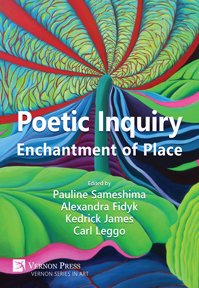Purchase this book
(click here to change currency)
"Sadia Gill has done a pioneering work by introducing a new way to analyze and look at poetry in general and at Derek Walcott`s poetry in particular. Scholars and researchers of poetry now have a guiding light to lead them to the slant and mysterious world of poetry."
Poet-Diplomat Abhay K.
"The use of imagery in poetry is at once intriguing and mystifying; and the task of decoding them is inevitably daunting. In this important new work Gill offers hitherto unexposed insights into what was going on in the head of Derek Walcott when he wrote his historically significant poetry."
Poet and award winning storyteller - Trevor G Carter
This book investigates the potential purpose of recurrent communication images in the poetry of Derek Walcott. The recipient of the Nobel Prize for literature in 1992, Walcott is one of the most important postcolonial poets of the 20th century. His poetry delves into the dynamics of Caribbean marginalization and seeks to safeguard the paradigms characteristic of his island home. Several major studies have examined themes in his poetry but the images of communication in his poetics have not been explored. This book examines Walcott’s poetry expressions that the poet brings into play in order to demonstrate the relevance of the Caribbean in the contemporary world—firstly through a study of communication imagery, and secondly through an examination of the conclusions he reaches through these means. The quantitative chart demonstrates that Walcott is especially reliant upon images of communication from the 1980s. Extensive textual analysis indicates that the place and contextual meaning of communication imagery, for example, page mirrors the historical plight of the Caribbean region; likewise, line expresses an identity deficit. Finally, this book validates that Walcott’s extensive use of communication imagery in his poetry contributes to a fluid notion of self that embraces multiculturalism while maintaining the imaginary intact.
Abstract
Acknowledgements
Foreword
List of abbreviations
Introduction “I open their books”
Introducing Derek Walcott
Postcolonial literature and Walcott’s poetry
Caribbean theory
Walcott as a postcolonial painterly poet
Main argument
Communication images
Imagery
Walcott as a metapoet and an ecopoet
Existing works: trends and gaps
Postcolonial literature
Imagery
Postcolonial literature and imagery
Metapoetry and metafiction
Research methodology
Research questions
Overview of chapters
Chapter 1 “Blank pages turn in the wind” - Images of writing (page, paper, pen)
Introduction
Hyponym 1: Page
Page History
Page Caribbean
Page Identity
Page Travel
Hyponym 2: Paper
Paper History
Paper Identity
Hyponym 3: Pen
Pen History
Pen Identity
Summary
Images of writing sketches
Chapter 2 “Fiction in a fiction” - Images of narrative (fiction, book, prose, read/ reading)
Introduction
Hyponym 1: Fiction
Fiction History
Fiction Identity
Fiction Travel
Hyponym 2: Book
Book History
Book Caribbean
Book Identity
Book Travel
Hyponym 3: Prose
Prose History
Prose Caribbean
Prose Identity
Prose Travel
Hyponym 4: Read/ reading
Read/ reading History
Read/ reading Caribbean
Read/ reading Identity
Read/ reading Travel
Summary
Images of narrative sketches
Chapter 3 “Sunlit stanza” - Images of poetics (poetry, poem, rhyme, rhythm, stanza, meter, line)
Introduction
Hyponym 1: Poetry
Poetry Caribbean
Poetry Identity
Poetry Travel
Hyponym 2: Poem
Poem History
Poem Identity
Hyponym 3: Rhyme
Rhyme History
Rhyme Caribbean
Rhyme Identity
Rhyme Travel
Hyponym 4: Rhythm
Rhythm History
Rhythm Caribbean
Rhythm Identity
Hyponym 5: Stanza
Stanza Identity
Stanza Travel
Hyponym 6: Meter
Meter Caribbean
Meter Identity
Hyponym 7: Line
Line History
Line Caribbean
Line Identity
Summary
Images of poetics sketches
Chapter 4 “This brightening noun” - Images of language and vocabulary (language, speech, dialect, vowel, word, noun)
Introduction
Hyponym 1: Language
Language History
Language Caribbean
Language Identity
Language Travel
Hyponym 2: Speech
Speech History
Speech Caribbean
Hyponym 3: Dialect
Dialect History
Dialect Caribbean
Dialect Identity
Dialect Travel
Hyponym 4: Vowel
Vowel History
Vowel Identity
Hyponym 5: Word
Word History
Word Caribbean
Word Identity
Word Travel
Hyponym 6: Noun
Noun History
Noun Identity
Noun Travel
Summary
Images of language and vocabulary sketches
Chapter 5 “Hyphenating horizons” - Images of grammar and punctuation (syntax, phrase, sentence, parenthesis/ parentheses, hyphen, question)
Introduction
Hyponym 1: Syntax
Syntax Identity
Syntax Travel
Hyponym 2: Phrase
Phrase History
Phrase Caribbean
Phrase Identity
Phrase Travel
Hyponym 3: Sentence
Sentence Identity
Sentence Travel
Hyponym 4: Parenthesis/ parentheses
Parenthesis Caribbean
Parenthesis Identity
Parenthesis Travel
Hyponym 5: Hyphen
Hyphen History
Hyphen Caribbean
Hyphen Identity
Hyphen Travel
Hyponym 6: Question
Question History
Question Caribbean
Question Identity
Question Travel
Summary
Images of grammar and punctuation sketches
Conclusion “It goes white again and the book comes to a close”
Primary sources of Walcott’s poetry
Bibliography
Appendix: Graphs
Index
Sadia Gill is a Zurich based experienced corporate communicator. She is also a qualified American literature and English language teacher (speaking skills specialist). She holds a Masters in English from the University of Neuchatel, Switzerland. Being passionate about both communication and literature, Communication Images is the result of Gill’s extensive post-graduate research.
Communication and Poetry, Metapoetry, Metafiction, Ecopoetry, Postcolonial poetry, Caribbean literature, Identity, and Travel
See also
Bibliographic Information
Book Title
Communication Images in Derek Walcott's Poetry
ISBN
978-1-62273-132-9
Edition
1st
Number of pages
326
Physical size
236mm x 160mm

![Communication Images in Derek Walcott's Poetry [Hardback]](/file/2437/d6aad8e8ae6990a1c2e0beacb211dc07/1476039058.jpg)



